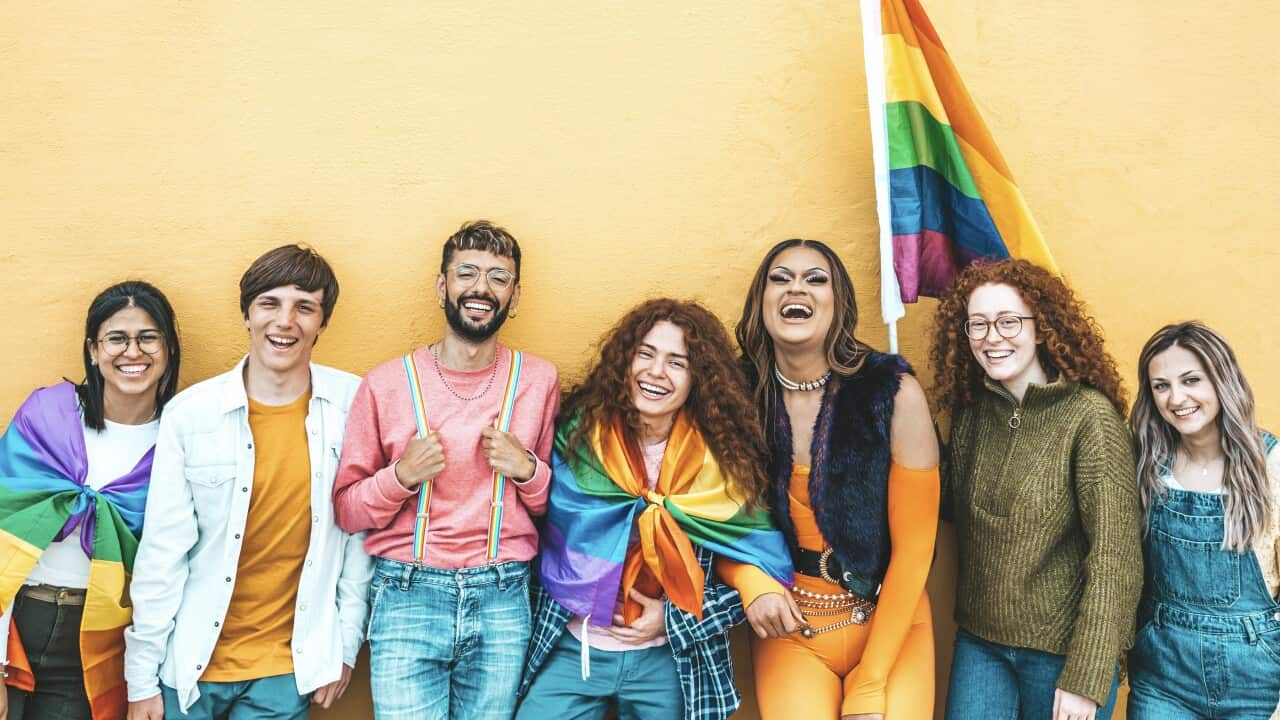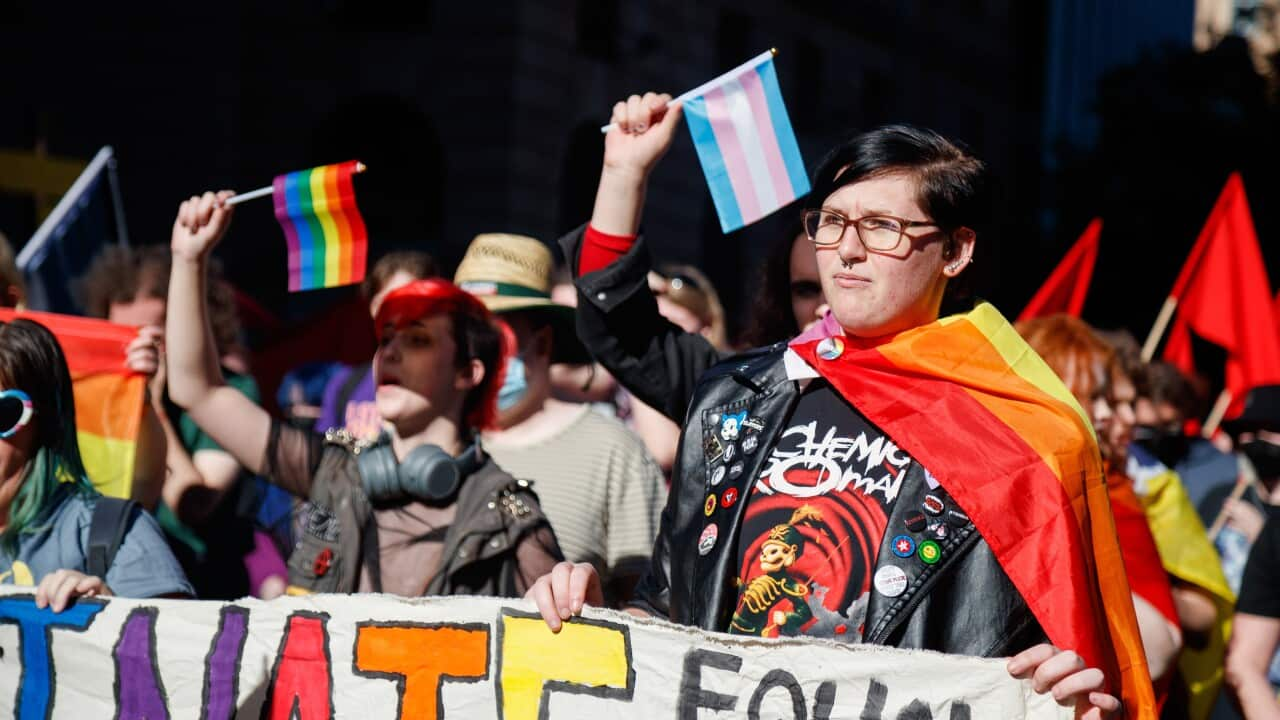Like our continuously evolving language, the LGBTIQ+ acronym has changed to reflect the different terms people use to describe themselves.
It stands for Lesbian, Gay, Bisexual, Transgender, Intersex and Queer. The + represents others not explicitly mentioned such as pansexual, agender, and asexual.
The acronym encompasses Queer, previously used as a derogatory description, so while reclaimed by some, it is only used when people self-identify with it.
Ghassan Kassisieh, Equality Australia's legal director, describes LGBTIQ+ as an "umbrella term" for a diverse rainbow community.
"It represents diverse sexualities, genders and people with variations of sex characteristics, also known as intersex people," he told SBS News.
"It's grown with time to give more prominence to some of the diversity within our broader rainbow communities."
From GLB to LGBTIQ+: How has the acronym changed?
In the 1960s, as the gay rights movement gained momentum, activists reclaimed the word "gay" to describe people in same-sex relationships.
Around this time, the GLB — Gay, Lesbian and Bisexual — acronym was created for those who felt the word did not encompass everyone's experience, according to LGBTIQ+ youth organisation Minus 18.
While both men and women fought for the minorities' rights, men were often more vocal and open about their sexuality.
During the AIDS crisis of the 1980s and 1990s, things shifted. While men were largely affected, it was their female counterparts who went against fear-mongering in the media to provide medical care and support.
Minus 18 says this led to a conscious choice to re-order the acronym, starting it with an L, as an act of gratitude and solidarity.
Kassisieh said before the 1980s the gay movement was often "gendered and segregated".
"It was during the eighties that the broader gay and lesbian movement, along with bisexuals and trans people, started to work closer together to progress the goals of equality and inclusion and liberation for everyone together," he said.

Different versions of the Pride flag have been developed, including the Progress Pride flag, which includes a circle for intersex, brown and black for minorities, and white pink and blue for those who identify as transgender. Source: Getty / Mike Kemp/In Pictures
The expansion of the acronym reflects a desire from these minority communities to "be seen and be visible", Kassisieh said.
"That's why the acronym has changed over time to give prominence to those identities that might not have been seen in the past," he added.
Why do you see variations of the acronym?
While the acronym predominantly used in Australia is LGBTIQ+, there are some variations.
Kassisieh explains particular letters are added or removed depending on what community is affected by the issue being discussed.
"Sometimes you'll see the 'I' not included because the issue is not relevant to intersex people or you see the letter 'A' added for asexual … most people use the letters interchangeably," he said.
"What they're meaning when they use the broader acronym is that community of people who have genders or sexualities other than straight, cisgender or those without intersex variations.
"So it can be a bit confusing, but broadly speaking, we're talking about the rainbow community whenever we see those letters."




